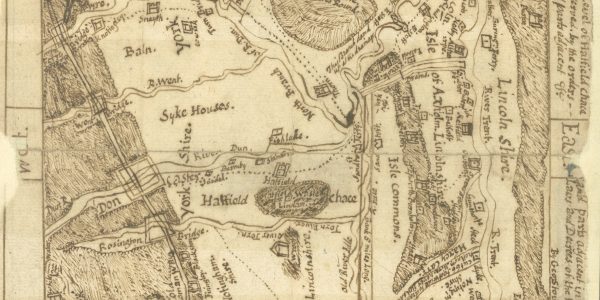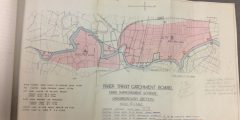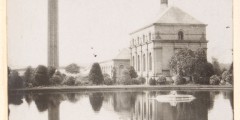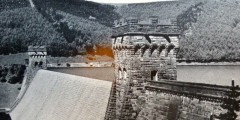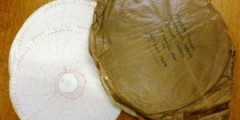Meet the Participants
January 4, 2024
Hatfield Chase, a low-lying marshland straddling Lincolnshire and Yorkshire, once teemed with wild birds, fish and deer – the pursuit of many a party on this royal hunting ground. However, by 1626, Charles I had drained the nation’s coffers and sought an innovative solution to his financial woes: employing another Charles (Vermuyden, a Dutch engineer) …
Dog Island
May 3, 2020
This is a guest post by Geography PhD student placement Robert Frost. My placement started in October 2019 with the aim of looking at the Engineers’ Files of the water drainage records in the University’s Manuscripts and Special Collections (MSC). These covered the predecessor bodies of the Severn Trent Water Authority, including the Trent Catchment …
Papplewick Pumping Station
July 27, 2015
This summer is the 10th anniversary of the re-opening of the only surviving working Victorian pumping station in the Midlands, Papplewick Pumping Station. In 1879, the Nottingham Waterworks Company built a reservoir near Papplewick, a small village just under 8 miles from Nottingham. Its purpose was to store water from Bestwood Waterworks to cope with …
Rain, Records and Research
February 17, 2014
January has been declared the ‘wettest month since records began‘ in parts of Britain by the Met Office, with many towns in Wales, the South West and Home Counties flooded and facing yet more storms. Several thousand miles away, the USA shivered as the Polar Vortex brought temperatures as low as -26C, and at least nine states recorded …
A year immersed in water records
May 15, 2012
This month I have come to the end of a year spent appraising, arranging and describing over 500 boxes of archive material relating to water, in my role as cataloguing archivist for Manuscripts and Special Collection’s Water Records Project. It has been quite a task, wrestling with rolled up plans, unwrapping packets of mysterious …
Tin Town: village of the dam builders
April 17, 2012
One of the most exciting finds amongst the water archive material I am cataloguing for the Water Records Project, is a series of significant architects plans for various buildings which formed the ‘Tin Town’ at Birchinlee, Derbyshire. When work started in 1901 on the construction of the Howden and Derwent Dams, the Derwent Valley Water …
Water work: the staff of the River Trent Catchment Board
February 21, 2012
A large leather-bound photograph album, found amongst the archive material I’ve been cataloguing for our water records project, gives an introduction to the work of the Engineer’s Department of the River Trent Catchment Board and the significant events that affected its activities in the years 1932-1939. These events include the building of new premises, …
New water collection descriptions online
January 6, 2012
The latest stage in the University’s National Cataloguing Grant Scheme Water Records Project is the online release of the descriptions of the new collections of material, which have been created by the Project Archivist. Files from 21 different accessions have been organised into several collections based on their provenance. Work continues on arranging and describing …
“Full steam ahead” (Papplewick Pumping Station)
October 6, 2011
Earlier this year, to mark the start of the project to catalogue the water records, representatives from the Papplewick Pumping Station Trust visited the University to find out more about our holdings. These include a series of plans of Papplewick Pumping Station which are still proving useful for engineers involved in maintaining the site today. …
Hydrometric data in the archives
September 23, 2011
One of the problems facing an archivist when cataloguing the papers of a business or organisation is the presence of material of a technical nature. The files of the Hydrology/Water Resources Section of the Trent River Authority include series of hydrological data in a range of technical formats that are going to prove challenging to …

